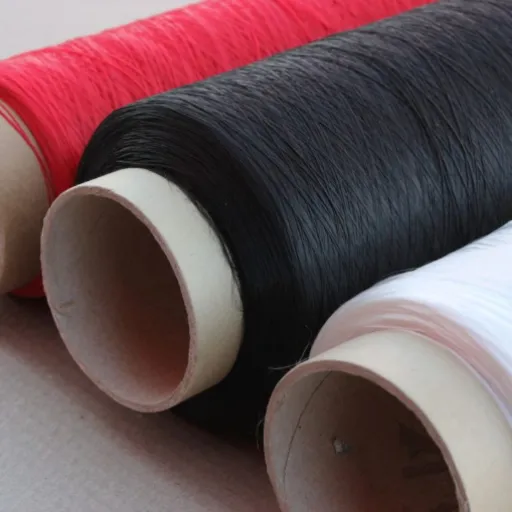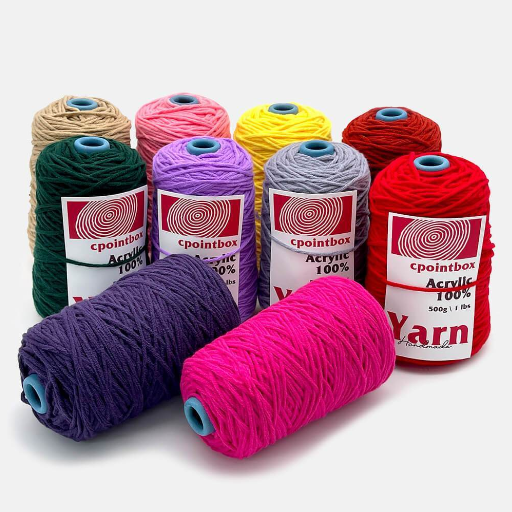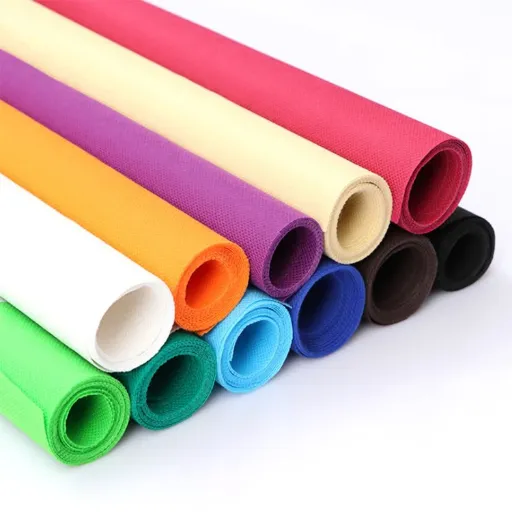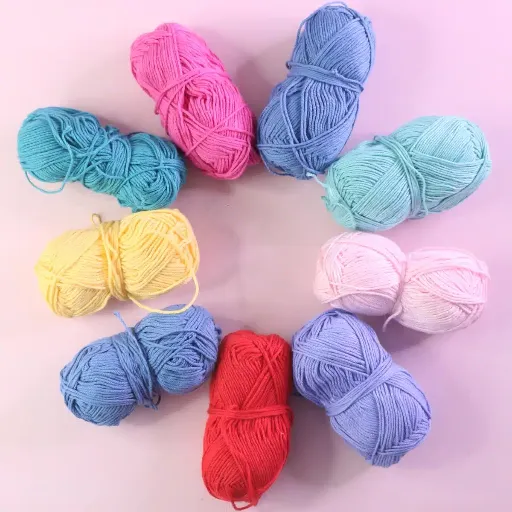Some good mentions about acrylic yarn are that it comes in vast assorted colors, and it is durable. It is also very easy on the pocket unlike other yarns. However, there is a widespread problem that many people who create things often face, and it is that the yarn is often very hard and uncomfortable. Thus, it can very often also spoil the overall impression of the items created. Still, there are some ways to reproduce acrylic yarn in a more viable, soft and pleasant way using some tricks and tips. This guide is designed to introduce you to the easiest methods for softening acrylic yarn, improving not only the feel of the yarn but also its usability in your work. Reading the following advice, you may find out you are comfortable with nothing else but a pair of knitting needles or a crochet hook, or that the technique you are involved in requires the application of various yarn colors for the result of comfort and professional construction.
Understanding Acrylic Yarn and Its Properties
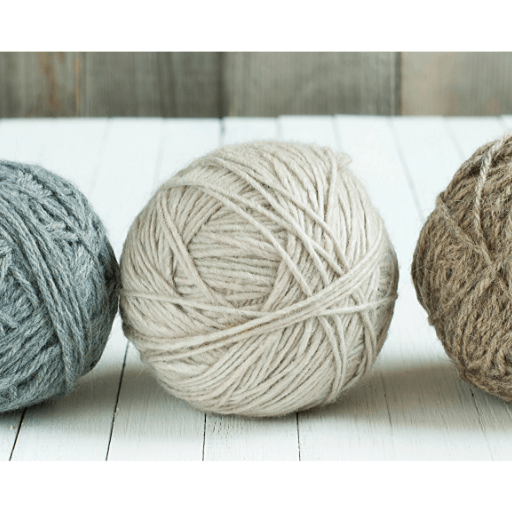
Acrylic yarn is regarded as a man-made fibered plastic having more of the synthetic polymer chemicals, like petroleum. It has high emphasis on its cost-effective nature and color diversity. But unlike others produced from natural sources, the fibre does not tend to take up water, which does act positively in the case of preventing mildew and spoilage of the material. It is also worth noting that this material has a weight that is easy to carry, does not cause any allergic reactions and is flexible, explaining why it is celebrated by those who craft. The material when new, may be stiff and somewhat irritating to the skin due to the specific production method that is used in making the fabric. Numerous sources extend that advice to providing useful techniques for softening the sold fabric. These aspects must be grasped by a knitter or a crochet enthusiast using heavy yarn since they hope to emphasize them in the project.
What is Acrylic Yarn?
Acrylic fiber, on the other hand, is a completely man-made fiber that is engineered from a polymer referred to as polyacrylonitrile, which is typically made from non-renewable resources like petroleum or natural gas. The polymer is produced using either wet or dry spinning where it is dissolved and forced into narrow fibers that are further drawn, stretched, and processed in a manner that improves fiber strength and other characteristics. Acrylic, being a synthetic fibre, with current technologies, efforts have been made to create acrylic-soft and acrylic-elastic fibres similar to, for example, wool fibers, which can be used in multiple textiles. Acrylic yarn unlike most of the other fibers is wash and tolerant hence its appeal. It is an ideal product to make use of due to the fact of its colour fastness and wear and tear resistance. Such aspects make it extremely longlasting and durable without losing any of its characteristics. Acrylic can also be maintained very easily without maintenance being a headache; hence, the clothing, ornaments, and art elements created with it make the manufacturer a favorite of beginners and all other amateurs. Also, it is cost-effective and quick to work with which greatly appeals to crafters who are engaged in these particular crafts. There is a current emphasis on sustainability in the production of most goods, whether from a leftist or a consumer standpoint, and this has, in turn, caused manufacturers of acrylic fabric to come up with more environmentally friendly processes to use.
Compare Acrylic Yarn with Other Yarn
| Parameter | Acrylic Yarn | Wool Yarn | Cotton Yarn | Silk Yarn | Bamboo Yarn |
|---|---|---|---|---|---|
| Fiber Source | Synthetic (petroleum-based) | Natural (sheep fleece) | Natural (cotton plant) | Natural (silkworm cocoons) | Natural (bamboo pulp) |
| Texture | Smooth and soft | Warm and slightly coarse | Soft and breathable | Smooth, lustrous, and delicate | Silky and smooth |
| Durability | High; does not shrink | Moderate; prone to pilling/shrinking | High; durable but may weaken with wear | Moderate; prone to fraying | High; strong and durable |
| Moisture Absorption | Low; repels water | High; absorbs moisture | High; highly absorbent | Moderate | High; absorbs moisture |
| Breathability | Low; traps heat | High; very breathable | High; highly breathable | Moderate | High; breathable |
| Warmth | Retains heat well | Excellent for warm clothing | Moderate; not great for cold climates | Low; not very insulating | Low; not very insulating |
| Allergens | Hypoallergenic | May cause allergies in some individuals | Hypoallergenic | Hypoallergenic | Hypoallergenic |
| Maintenance | Easy; machine washable | Moderate; requires hand washing often | Moderate | High; delicate hand care needed | Moderate |
| Environmental Impact | Moderate; non-biodegradable, oil-based | High; requires land, water resources | High; water-intensive cultivation | High; labor and chemical-heavy process | Moderate; renewable and sustainable |
| Cost | Low; very affordable | High; more expensive | Moderate to low | High; luxury material | Moderate |
Methods to Soften Acrylic Yarn
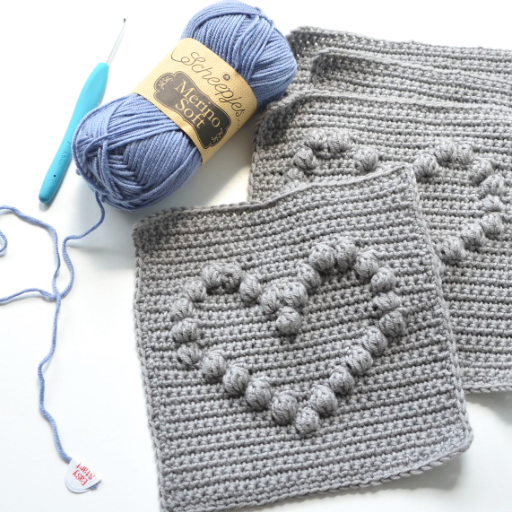
Wash with Fabric Softener
You can wash the yarn with your hands or in a washing machine under a mixture of cold to lukewarm water, enforcing the use of a little amount of softener. Responding to the soaking principle in most types of yarns, let the yarn sink into the water for about 15 to 20 minutes, then rinse thoroughly and with more care. This is useful in loosening the yarn for most use cases.
Steam Blocking
Apply a steam iron so that it gently warms the yarn. The iron needs to be kept a few inches away from the surface. Do not use the iron directly onto the surface. The steam heat will help to relax the interested ends allowing it to be moved conveniently.
Conditioner Treatment
Apply a small amount of conditioner to the yarn and keep stirring gently while washing in a basin. After 10-15 minutes of rest, rinse it thoroughly. Comb the yarn and wash it with a little conditioner to make it effective on hair fibres.
Tumble Drying with Care
Place the washed scheme into a laundry bag suitable for the type of rid-sized washer. Dry the clothing using the lowest temperature setting; if possible, use a no-heat option. Also, you can add dryer balls to aid in softening the range and to help against entangled strands also.
Advanced Techniques for Making Acrylic Yarn Softer
When we are referring to steam treatments issues we mean procedures like garment ironing or pot/water boiling, where avid reminiscence is done in combating wool or acrylic material, without the use of water. What would normally happen during this process is that the synthetic fibers would be relaxed and untangle easily due to the heat and the range of steam that’s unclothed. When these methods are excessive, most of the yarns can break or the shape of the yarn at the end. Pre-treatment however, creates no obstacles to the method, while indeed it can heighten the basic potential of such acrylic yarns which is more complicated to produce, that is increase in softness.
Advanced Tip: One of the latest innovations in textile technology is the use of a glycerin-based hair rinse on the yarn to make it smooth. Mixing one part glycerin with two parts water will create an emulsion, which will hydrate the yarn while ensuring its proper interaction with the fibers. To apply this solution, simply soak the yarn in it for about 20 to 30 minutes, making sure all the fibers are well over-saturated. After that, apply gentle pressure to the fiber to remove excess fluid and then leave the thread to dry in the open air. Glycerine is also a wonder for preventing drying owing to its unique chemical properties of attracting and keeping moisture inside the material, making it easier to knead and wear. This approach is especially useful for people who’d like to make their acrylic yarn smoother for a certain project as opposed to the ever hard acrylic yarn.
Yarn Softening Experiment: Testing Various Methods
Also, the boiling method dips the acrylic yarn in warm water so as to relax the thread and provide a softer feel to the material. To exercise the steam treatment, the yarn is submerged in the warm to hot water for about 10 to 15 minutes. Caution should be taken when checking the water temperature to prevent it from becoming too high to harm the yarn. Once you have steamed the yarn, use a heat-proof implement to take it out and let it dry a bit before washing it in warm water. This is very helpful to regain the flexibility in stiff yarn but it is also very important to control the amount of heat due to the risk of wearing out yarn.
Caution: Another common approach is dipping the fabric into water filled with a fabric softener. Prepare a blend of the fabric softener with water in the ratio of 1:1 in a bowl that can hold the yarn properly, and ensure the yarn is soaked in the solution, and let it sit for a period of not less than 24 hours. Then deposit soaked yarn into clean cold water to remove any remaining detergent after the 24 hours. A very high level of “softness” can be achieved with these mechanical actions, which also impart a mild odour on the yarn, thus proving useful especially in areas of touch and smell-sensitive projects.
Different softening techniques are helpful under different circumstances, respectively, in the application of yarn. For example, soaking the yarn in glycerol while storing it would help preserve the moisture and elasticity, while other techniques such as boiling or using a fabric softener treatment would deal with textural requirements effectively because they produce different craft useful textures. Therefore, the best remedy in any one’s case necessitates the conditions of the yarn’s usage, the softness needed, the flexibility in the wear and tear, and the compromises that can be made.
Recommended Products for Softening Acrylic Yarn
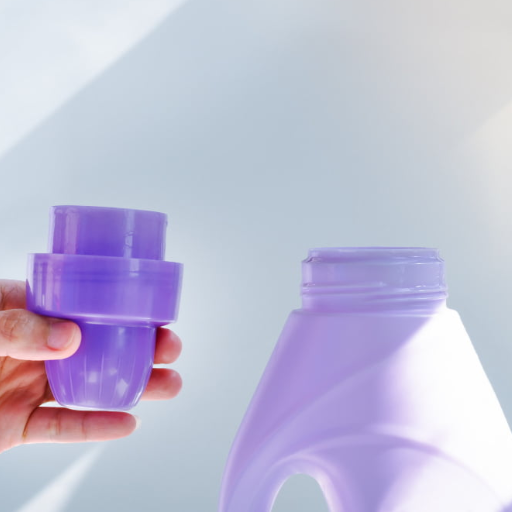
Fabric Softener
Fabric softener is relatively user friendly and widely used to soften yarn made of acrylic blends by resin bonding. It is recommend to use the preparation in gently diluted concentrations as opposed to using full strength so that the complaints of the oversaturation can be avoided and maximum cup results are achieved.
White Vinegar
Also, it is possible to relax the fiber with the most common and cheap white vinegar during perspiration of acrylic yarn. It is especially well-suited to those who prefer alternative therapies, as it is a natural solution.
Glycerin
Many benefits are recognized for glycerin when it comes to the enhancement of the moisture content and the elastic properties of the acrylic fibre. Glycerine also reduces the thin edges of the above polymer on the upper surface of the carpet. Adding a few drops of glycerin to the aqueous solution and blending well, already with the ideal ratio will give better results
Steam Iron
The steam iron is described because it is used primarily as a yarn enhancer, which softens the acrylic yarn in a more controlled and effective manner. This increases yarn flexibility. Moreover, this method is easy to carry out.
Using Fabric Softeners Effectively
When you use fabric softeners on acrylic yarns, it is important to follow proper method to avoid any damage to the fabric. This is especially important when using liquid fabric softener since it is strong and can cause white marks and spots with all new synthetic items. Placing the softener during the rinse stage makes sure that the distribution is even, which in turn improves the yarn’s softness and smoothness. In order to block breakdown of synthetic fiber or damaged fine fabric, go for the fabric softeners for all of which labeling advises to use with fabrics.
You could also try using tumble dryer sheets in place of fabric conditioners, especially when the fabric is to be machine-dried. These sheets facilitate smoothing the pieces due to the release of dissociable anti-static agents and other active compounds, which helps them better adhere to the fabric’s thread backbone thanks to the drying process. Moreover, excess application of softening agents could affect the clarity of stitches in the fabric at the finishing level so it is important to do so with limits. Check the washing instructions of the manufacturer prior to using any chemicals or finishes on the fabric to make sure that the finish is in accordance with the particular type of fabric. This approach is not only used to safeguard the quality of yarn but also ensures that the produced handmade products have the correct and professional appearance.
Tools and Accessories for Yarn Softening
You may appreciate an article about “yarn” without learning something about the tools and accessories that help in rendering them in a very soft state cannot happen. For example, in order to wash the garment developed from yarn, one needs a laundry bag made of coarse cloth or strainer nylon. It helps to prevent the object from turning into a knotted mess as well as avoids abrasion inside washing machines. Mother didn’t forget a large volume of detergent and fabric softener, because of which the washing process was postponed. In fact, a softening or tetronizing agent is put in the final rinse, but use care in order to prevent softening the adhesives too much, hence making the paper sheets weak in bonding.
Another important accessory is foam blocking mats along with rust-proof T-pins or blocking wires. These will help you to reshape knitted objects after washing so they come out as per the intended size and shape. Additionally, they are very useful for gentle relaxation of fibers from fabrics such as blended ones. For hand-operated systems, an umbrella-design yarn swift and a ball winder are appropriate not only to rewind the thread after conditioning but also to regulate proper tension.
In order to maintain green practices that are so much needed, especially in home improvement, ecology, and waste segregation, it is only right to give some examples on natural substances like vinegar or citric acid which can do the required softening of fabrics without the use of chemical additives. When these substances are combined with proper tools, it helps to maintain the original condition of the yarn as well work on the improvements over the texture of the yarn. Learning how to handle such various items helps to make one of the greatest differentiations between artefacts and useless things. Equalizing such items and products on the functional and artistic levels is in the interest of almost every who is engaged in handmade creations.
Maintaining Softness in Your Yarn Projects
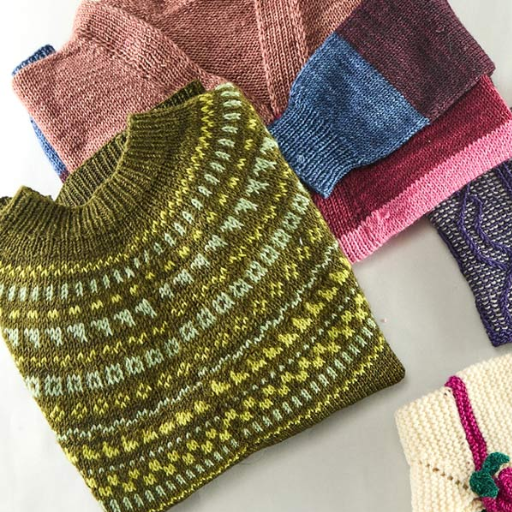
- Gentle Washing: Hand-wash your creations in lukewarm water using a mild detergent or soap specifically designed for delicate fabrics. This prevents fibers from stiffening or becoming damaged.
- Proper Drying: It is better not to dry clothes on a towel but laid on a table and try to smooth them out. Plies and knits made to dry and stretched out sideways are delicate projects that have to be handled carefully. To avoid damaging, do not hand wring clothes or put them in a dryer.
- Moisture Retention: Put Hanks of Yarn or balls of wool in paper lined plastic boxes to keep them the best condition possible without the risk of the paper absorbing all the moisture from the yarns. Bottles shelves or bins made of timber or wire, with a lid grain enhancing wax applied and glass doors in wooden frames.
- Periodic Conditioning: If the suit is properly made but still feels a little rough to touch, for a change you may resort to 1% diluted vinegar treatment. In particular, when dealing with protein (wool) fibers, it is better to drink an optimum level of lanolin liquid.
Tips for Keeping Acrylic Yarn Soft Over Time
- Proper Washing Technique: Use lukewarm water and a mild detergent specifically designed for delicate fabrics. Avoid washing acrylic yarn in hot water, as temperatures above 104°F (40°C) can cause fibers to harden or lose elasticity.
- Avoid High Heat During Drying: Acrylic is an exquisite fabric upon which to work, but it does go very stiff when in contact with high temperatures. Air-drying should be the best practice but if a dryer is used then it should be placed on low heat or gentle handling.
- Conditioning Methods: For the utmost softness, it would be great to immerse the damp yarn into a bowl of water with some fabric softener and let it soak for a quarter of an hour to half an hour. As an alternative, it will be possible to add one tea spoon of white vinegar during the wind after s rising in order to eliminate the deposited stain risks which leave the fibers stiff.
- Minimal Agitation: While washing or keeping items that are acrylic, do not do heavy work which is likely to cause the acrylic fiber to turn woozy. In addition, do not rub o handle too much the clothes or even twist into a tight ball since this achieves fiber fuzzing and local hydration.
- Regular Use of Dryer Sheets: In case of a hardware or fabric made of acrylic yarn experiencing roughness after wear over time, massaging the fabric with a dryer sheet will help restore the smooth texture softness, especially to dryer static clings, which are rubbed to reduce static cling.
- Storage in Controlled Environments: If possible, it is preferable to keep the acrylic wool threads in a box or any other storage container made of breathable material. Any swift changes provokes fiber decomposition thus yarn roughness.
Washing and Care Instructions for Softened Acrylic Yarn
Proper washing and care are essential to maintain the softness and durability of acrylic yarn. Follow these detailed guidelines to extend the life of your projects:
- Hand Washing: In the case of an acrylic creating garment or product which was already softened, it is best to hand wash it. Use lukewarm water and a mild detergent. Do not be so rough as the fabric can be harmed due to excessive rubbing.
- Machine Washing: When you machine wash any product, put it in a mesh bag so as to minimize rubbing. Wash it in a gentle cycle, delicate cycle or the likable with cold or lukewarm water, to lessen the chances of fibers clumping (pilling).
- Avoid Harsh Chemicals: It is not recommended to use liquid cleaners containing bleach or fabric softeners that have silicon as they may wear out the fabric fibers and lessen the feeling of purity.
- Drying: The recommendation for drying acrylic fabric is to dry it naturally without resort to heat drying. Spread dry garments on a clean towel arranged inside a well-ventilated place, where they may be reshaped if any need arises. If a drier is anticlimactically used, the heat level should be diminished by choosing the cool setting and not the hot one to minimize cracking of the material which is caused by heat reinforcement.
- Spot Cleaning: Smaller stains that occur on some parts should be cleaned off using some little mother liquid or detergent without necessitating a whole body wash on the affected part. Make sure those parts dry nicely to avoid moisture that can cause bacteria and fungus stains.
- Long-term Care: Be observing normal maintenance with a few occasional cleans and subsequent storage that allows the yarn to breathe, helps in keeping this soft and interesting structure intact. Sunrays should not befall them for long periods of time as the ultraviolet rays can potentially damage the yarn or even change the light alteration of the yarn components.
Obeying all these provided washing and maintenance instructions can help quite in achieving much softness, better appearance, and longer life span for that crochet or knitted apparel made of acrylic.
Practical Tips for Softening Yarn Before Using
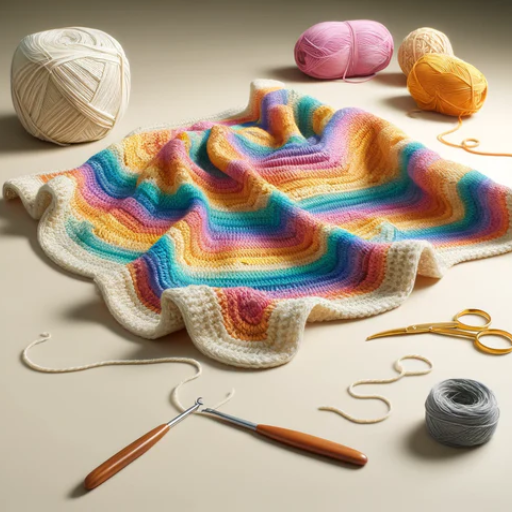
- Wash the Yarn: Dispense gently washing within the lukewarm water, made slightly soapy with powder or liquid detergent or some baby shampoo. Handle it tenderly and ensure the fibers are not over worked. Hand Wash the yarn to remove all the detergent.
- Condition the Fibers: After washing, leave the yarn in a little warm, conditioned water with a small amount of fabric or even body oil products such as soap. This would assist in the fibers smoothing out in texture to the touch.
- Dry Carefully: Finally, put the yarn on a dry towel and keep it flat for the drying process. It’s preferable in attempting to dry out the thread not to put it on the line. It must be done to make sure that does not shrink, wrinkle or run.
- Steam Blocking: Soak the piece in diluted soap, drain it for about half a minute, and then use warm water to gently wash it. Get the piece completely dry afterwards, for nobody to get scalded from any lion in .ven your hands.
Preparing Your Skein for Crochet or Knit Projects
Physical configuration of yarn thread is often a factor in the efficiency and pleasure of the craft activities it is used for. In addition, it also prevents dislocations because the yarn does not attain those undesirable round “bumps” that normally appear when it lumps together upon being lifted. The most common configuration though, is the skein but it could also be presented as a hank or a ball. It is recommended to have the yarn in hanks, especially if the yarn will need to be wound into a ball or a cake. This is possible manually or with the aid of a yarn winder and swift in order to avoid creating any unwanted tension.
Do not skip the step of carefully checking the yarn for any imperfections like snags, knots, tears or areas of inconsistent yarn weight that may affect the appearance of the garments. In case of knots, unravel them without forcible movement so as not to crumble the fibres in the knot. Additionally, it would be beneficial to verify the dye lot number when multiple cakes of the same color are required for a project, as the same dye lots can exhibit slight differences that may be noticeable in the end product.
Remember to give your fabric a good soaking before starting your project if, for any reason, it was all boxed, or the cotton still has that original hard or crisp feeling. This is the only way to remove every hint of dirt from your cloth and also ensure a hassle-free crafting environment. It is time and effort-consuming to knit or crochet before these very simple steps are taken on the skein, which leaves irregular and imperfect patches in the craft.
How to Soften Yarn During Your Crochet Project
Touching yarn like in crocheting must be done when looking to have a highly relished output. One process that can be successful in softening the wool is immersing the finished product in warm water that also has a little fabric softener or hair conditioner. Put the product into the softening solution for a while, say half an hour, and this will enable the thread to free-up somewhat in the structural arrangement. Having softened the product, rinse it in water first and then wash it once more to take off the cleaning remains, interacting as little as possible with the product so that the form is preserved.
Another method that one could use is steam blocking, in which the fibers are softened a little bit, and a shape is put into the project as well. This can simply be done by taking a small steamer and lightly steaming (low heat) the yarn using a cotton cloth or similar fabric. When steaming the yarn, one should avoid pressing down to prevent the yarn from being directly ironed. The presence of moisture and heat results in the fibers losing some of their tautness, hence making the yarn to feel much softer.
Some natural approaches can as well be utilized, for example, washing the object with some gentle washing agent and also putting some wool dryer balls next to it when finally drying it in a pillow slip in order that the harshness may be surrendered. All these methods make sure that the yarn not only retains its original state but also appears more tasteful and falls more beautifully, which is very advantageous when it comes to making crochet, as both practical and aesthetic purposes are met.
Reference Sources
-
The Loopy Lamb: How to Soften Acrylic Yarn – The Ultimate Guide
- Summary: This guide explores multiple methods to soften acrylic yarn, including using fabric softener, vinegar, hair conditioner, and steam. The hair conditioner method was found to be the most effective for achieving softness, while steam was the quickest and easiest.
-
LindeHobby: How to Make Acrylic Yarn Softer – Tips for Cozy Crafting
- Summary: This article emphasizes the importance of aftercare in softening acrylic yarn. Techniques include pre-washing with gentle detergent, soaking in fabric softener, and using a tumble dryer on low heat.













